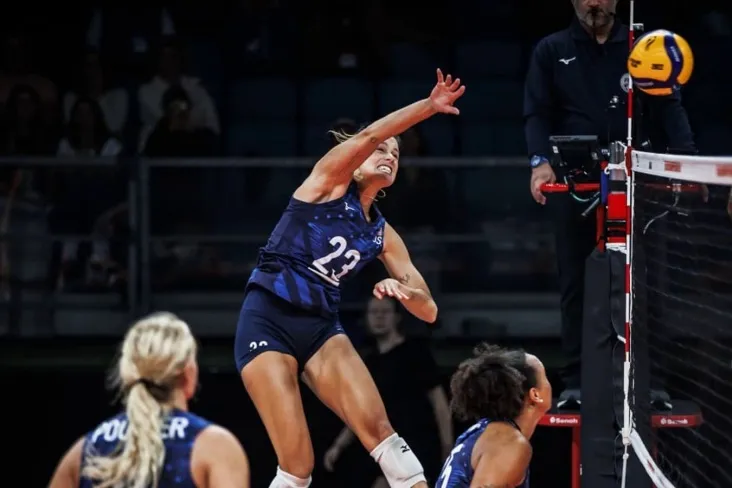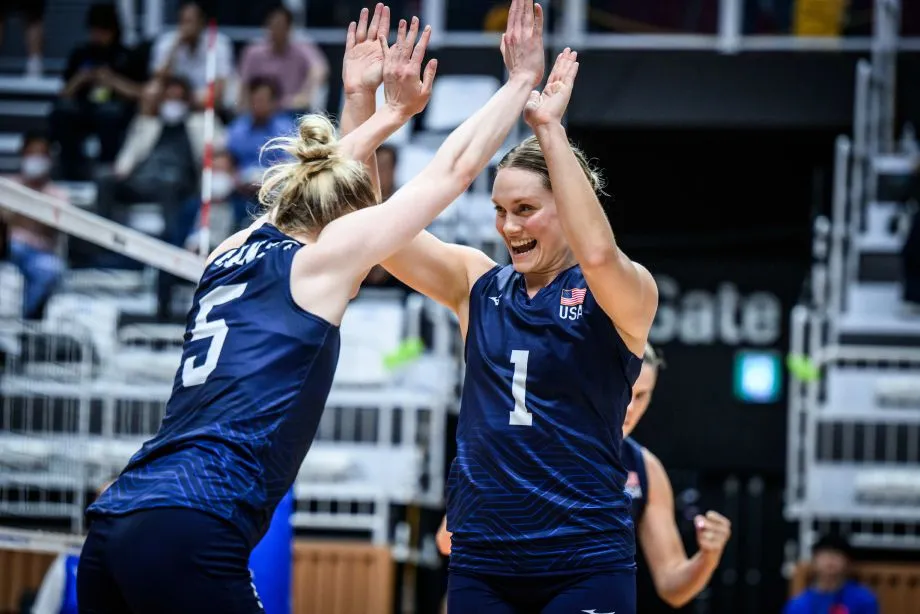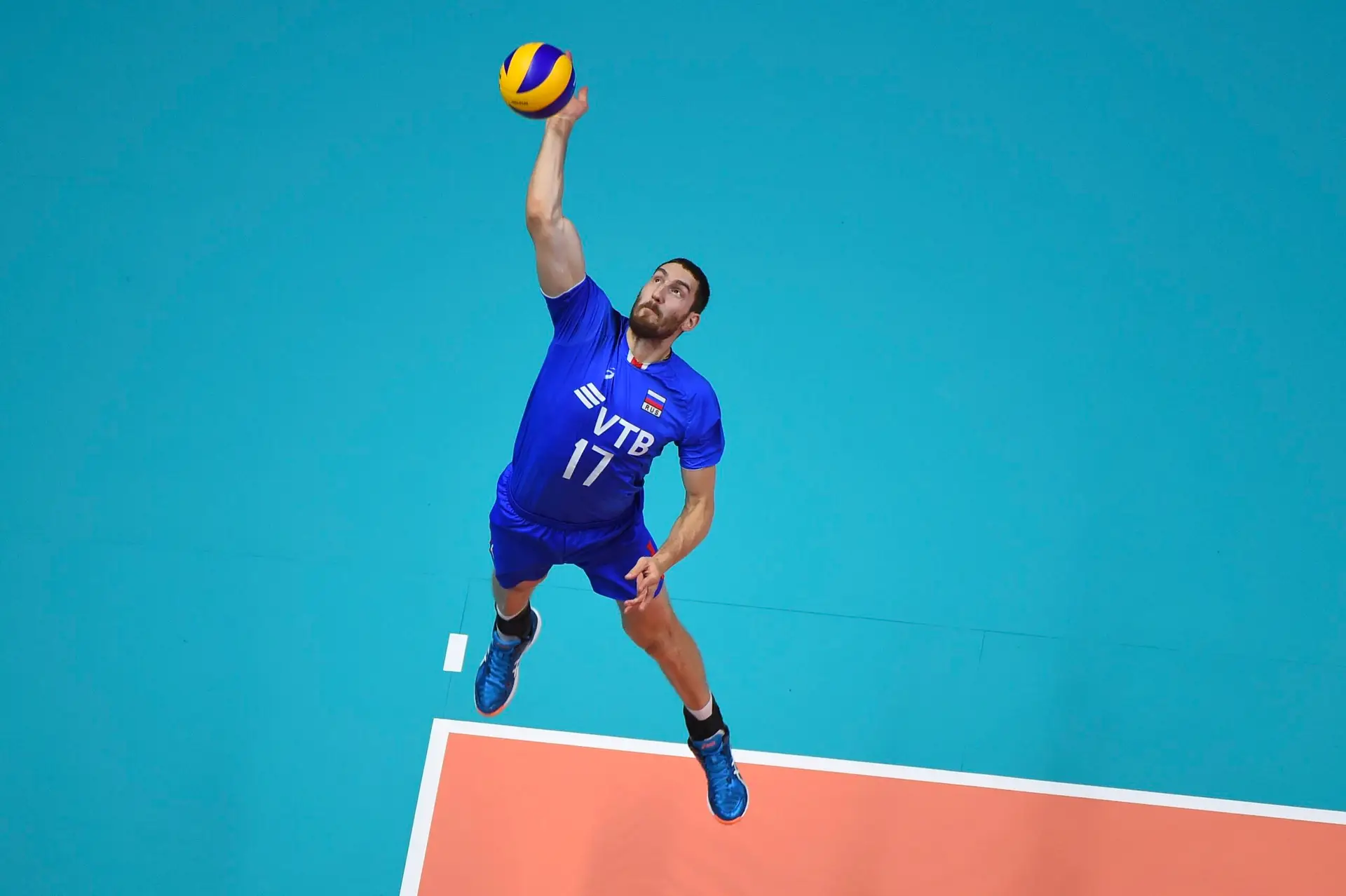Dynamic, strategic and exciting – volleyball has captured the hearts of millions of fans around the world. But where did the history of this popular sport begin? Which country is considered the birthplace of volleyball and how did it go from being a simple sports game to an Olympic discipline that everyone knows? The answer lies at the end of the 19th century, when one man’s ingenuity led to a new kind of team competition.
Which country is considered the birthplace of volleyball?
The USA – this country is considered the birthplace of one of the most dynamic and exciting sports. In 1895 in Holyoke, Massachusetts, the head of the YMCA sports club, William J. Morgan, offered the world a new game that combined elements of basketball, baseball, tennis and handball. The discipline, developed for young people looking for an alternative to basketball with less contact and less trauma, was called ‘Mintonette’.

Morgan’s main idea was to create an activity that was accessible to people of different ages and fitness levels. The ball had to roll over the net without touching the ground and teams could interact with the ball through a combination of jumping, passing and hitting. Later, the game was called ‘volleyball’, as it was obviously necessary to pass the ball over the net in the air – from the English word ‘volley’.
Since then, volleyball has become a part of American culture and has become increasingly popular outside the United States. The rules were constantly improved, making the game ever more dynamic and spectacular.
The history of volleyball: Which country is considered the cradle of volleyball?
There is a clear answer to the question of where volleyball originated: in the city of Holyoke in Massachusetts, USA. The first demonstration of the game took place in 1896 in the sports hall of the YMCA college. At this demonstration, Morgan explained the basic principles and the first rules of volleyball. The game consisted of two teams of nine players and the net was 198 centimetres high. The participants had to throw the ball over the net, making sure it didn’t fall on their side of the court.
The speed of the game and its flexibility made volleyball popular with different age groups. The first balls were made of leather and consisted of three parts, and the activity itself did not require expensive equipment or complex facilities. Within a few years, volleyball was already part of the physical education curriculum in all American YMCAs.
The first volleyball rules
The first volleyball rules, proposed by William Morgan, differed from today’s standards. The net was 198 centimetres high and the number of players per team could vary between 6 and 9. The game was played to 21 points and it was allowed to hit with any part of the body above the waist.
The rules were later adapted and clarified. In 1916, the principle was introduced that a team had to take three shots before the ball was allowed to go over the net. In the 1920s, the YMCA developed clear requirements for the size of the court and introduced the rule that the serve must be made behind the back line. These changes made the game more structured and entertaining.
Over the course of the 20th century, the rules were developed further. The net height was set at 243 centimetres for men and 224 centimetres for women. The scoring system was also changed and led to the rally scoring system, which is still used today.
Development of volleyball in the world
 After its emergence in the United States, volleyball quickly spread not only in the country itself, but also throughout the world. Asia and Europe were the first countries where the game found a large audience among young people and students. During the First World War, American soldiers brought volleyball to European countries, contributing to its spread.
After its emergence in the United States, volleyball quickly spread not only in the country itself, but also throughout the world. Asia and Europe were the first countries where the game found a large audience among young people and students. During the First World War, American soldiers brought volleyball to European countries, contributing to its spread.
In 1947, the International Volleyball Federation (FIVB) was founded, which took on the task of standardising the rules and organising world championships. The first world championship in this discipline was organised in 1949 for men and in 1952 for women. These competitions became the most important stage in the development of the sport.
A special place is occupied by Olympic volleyball, which made its debut at the 1964 Games in Tokyo. Since then, this discipline has become one of the most popular. The development of beach volleyball in the 1990s also contributed to the popularity of the sport and made it accessible to millions of outdoor fans.
Volleyball in Russia and the USSR: which country succeeded the birthplace of volleyball?
The development of volleyball in Russia began in the 1920s thanks to sports enthusiasts who brought the game with them from Europe. In the USSR, the sport became part of physical education and quickly developed into one of the most popular sports. Soviet teams achieved excellent results in international arenas and won world championships and Olympic Games.
The USSR national team won gold medals in volleyball at the first Olympic Games in 1964 and repeated this success in 1968 and 1980. Soviet volleyball players Yuri Chesnokov and Inna Ryskal became symbols of the time and inspired a new generation of athletes.
Today, Russia continues this tradition by participating in international tournaments and developing youth leagues. The infrastructure created in the USSR still serves as a basis for training new champions.
Famous volleyball players
The history of volleyball is rich in outstanding personalities who have shaped the development and popularisation of this sport. Knowing their achievements makes it easier to understand how the game has changed over the decades and what efforts were needed to improve it.
Legends of world volleyball
There are many players in the world whose names have gone down in history forever. Their contribution to the development and popularisation of the game is invaluable. Particularly worth mentioning are:
- Giberto Godoy Filho (Jiba) is a Brazilian volleyball player who became world champion three times and won a gold medal at the 2004 Olympic Games. His powerful attacks and leadership qualities have made him one of the best attackers in volleyball history.
- Kim Young-Gun is a South Korean athlete who is recognised as one of the best service players in the world. Her ability to lead the game and create ideal conditions for attacking has made her a symbol of Asian volleyball.
- Sergey Tetyukhin is a Russian volleyball player who has been honoured as a champion of the sport. He has won four Olympic medals and is known for his consistent play and incredible physical stamina.
Which country is considered the birthplace of volleyball and why it matters
The answer to the question of which country is considered the birthplace of volleyball lies in the roots of the sport. The United States was the starting point where the game originated and developed thanks to the enthusiasm and ingenuity of William Morgan. It is important to know the origins of the sport in order to understand the path it has taken from a simple pastime in YMCA gyms to one of the most popular sports in the world.
Knowing the history helps to respect the traditions and accomplishments of athletes of the past. Every element of the game – from the rules to the tactics – has been moulded over the decades, reflecting the culture and spirit of the times. Today, volleyball unites people of all ages and nationalities and reminds us that its roots can be found in the late 19th century in Massachusetts, USA.

Conclusion
 Which country is considered the cradle of volleyball? Definitely the US. It was there that William Morgan developed a new game in 1895 that combined elements of different sports and proposed a new format of team competition. Today, volleyball is an Olympic discipline loved by millions around the world.
Which country is considered the cradle of volleyball? Definitely the US. It was there that William Morgan developed a new game in 1895 that combined elements of different sports and proposed a new format of team competition. Today, volleyball is an Olympic discipline loved by millions around the world.
 en
en  ru
ru  de
de  ar
ar  es
es  hi
hi  fr
fr  nl
nl  it
it  pt
pt  el
el 



